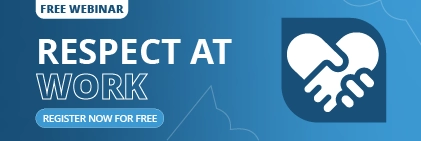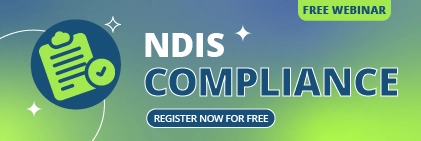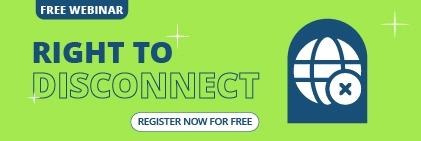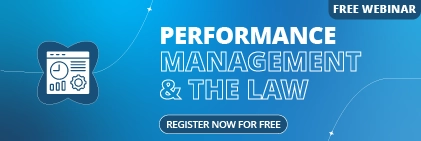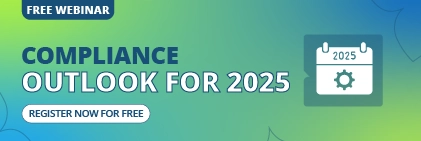You may already use HR or operational software and ask yourself, “Is this a WFM tool or an HRIS?”
Or perhaps your team is growing, processes are more complex, and you want to avoid investing in the wrong system.
Understanding the differences and overlaps between WFM software and HRIS could save you time, money, and a lot of headaches.
In this post, you’ll learn:
- What WFM software and HRIS are, and how they differ
- How they overlap and why integration matters
- When you might need one, the other, or both
- How to evaluate ROI and pick the best system for your organisation
Let’s dive in!
What is Workforce Management (WFM) Software?
WFM software helps you manage scheduling, attendance, labour forecasting, shift planning, and compliance with labour rules.
The purpose of WFM software is to ensure you have the right people, at the right time, doing the right things – with minimal waste and conflict.
Key Features
A good WFM tool will include:
- Automated scheduling (you define rules, and the system generates rosters)
- Time & attendance tracking (clock-ins, clock-outs, absences)
- Labour forecasting & budgeting (predict staff needs, allocate cost)
- Compliance rules (overtime, maximum hours, rest breaks)
- Employee self-service (staff can see shifts, swap shifts, request leave)
In modern suites, you may also see mobile apps, payroll integration, shift trading, and analytics.
Who Uses It
Typically, operations or line managers are the primary users. In shift-driven industries (retail, hospitality and manufacturing) WFM software is critical.
Benefits of WFM Software
When your WFM is solid, you’ll see improvements like:
- Lower labour costs (less overtime, fewer gaps)
- Better adherence to schedule rules
- Higher employee satisfaction (fair rosters, fewer manual changes)
- More visibility into real-time workforce needs
What is a Human Resource Information System (HRIS)?
HRIS stands for Human Resource Information System.
It’s a comprehensive system for storing and managing all your employee data, HR processes, payroll, benefits, performance, and reports. In essence, HRIS is your HR database and workflow engine.
Key Features of HRIS
Typical HRIS capabilities include:
- Employee records & personal data
- Payroll and benefits administration
- Onboarding/offboarding workflows
- Performance reviews, appraisals, talent management
- Reporting, analytics, compliance
- Leave & absence management, training modules
Modern HRIS often adds self-service portals, integration with other systems, and analytics dashboards.
Who Uses It
HR teams, payroll managers, talent or learning managers, and leaders who rely on people data will use HRIS heavily.
Benefits of HRIS
A robust HRIS helps you:
- Centralise HR data (no more spreadsheets scattered everywhere)
- Automate core HR tasks (less manual work)
- Reduce errors (consistent records, audit trails)
- Gain insights (reports, dashboards, trends)
- Ensure compliance and governance
WFM vs HRIS: Key Differences
To make the distinction clear, here is a side-by-side comparison:
| Aspect | WFM Software | HRIS |
|---|---|---|
| Primary Focus | Scheduling, attendance, labour optimisation | Employee data, HR processes, payroll |
| Main Users | Operations/line managers | HR/payroll/leadership |
| Core Modules | Rostering, time tracking, shift rules | Personnel records, benefits, performance |
| Goal | Improve operational efficiency | Streamline HR administration |
| Data Type | Real-time operational data | Historical & personal employee data |
| Integration Needs | HRIS, payroll systems | WFM, benefits, performance |
Yes, there is overlap. For example, both systems may manage attendance or absence data. But their core purpose differs:
- WFM is about optimising workforce execution – making day-to-day schedules and shifts work effectively.
- HRIS is about managing the employee lifecycle, from hire to retirement, encompassing pay, performance, and benefits.
In practice, you need both to work together. That’s where integration (or choosing a unified tool) becomes powerful.
Integration Between WFM and HRIS
When you use separate WFM and HRIS tools, integration is crucial. Let’s look at why, how and what challenges you’ll face.
Why Integration Matters
- Avoids duplicate data entry
- Ensures consistency (attendance in WFM should reflect in HRIS payroll)
- Enables better reports across operations + HR
- Reduces errors and mismatches
Common Integration Points
- Time & attendance data passed to payroll
- Employee master data synced (joining, leaving, promotions)
- Leave, overtime, and exceptions data shared
- Rule updates (e.g. shift rules, labour laws)
Use Cases: When to Choose WFM, HRIS, or Both
Not every organisation needs both systems immediately. The choice you make depends on your context.
- Retail & Hospitality: These are shift-heavy environments. You’ll likely prioritise WFM first to manage scheduling, then layer HRIS.
- Corporate / Office: More salaried roles, less shift complexity – HRIS becomes foundational.
- Healthcare / Manufacturing: You may need both because you need scheduling precision and robust HR processes.
How to Choose the Right System for Your Organisation
Choosing the right HRIS or workforce management system isn’t something you should rush.
The decision you make today will affect how your people work, how you manage compliance, and how much time and money you save in the long run.
Whether you’re upgrading from manual spreadsheets or replacing outdated software, this section walks you through a practical process to help you make a confident, informed choice.
Step 1: Audit Your Current HR and Workforce Processes
Before you look at any software, take a close look at what’s working and what’s not in your current setup.
Ask yourself:
- Are your rosters and attendance managed manually or in multiple spreadsheets?
- Does your HR team spend hours entering or fixing payroll data?
- Are employees frustrated because they can’t easily access their payslips, shifts, or training records?
- Do you struggle to maintain compliance documentation or monitor certifications?
This audit will highlight your pain points and help you understand whether your priority is operational efficiency (WFM), HR process management (HRIS), or both.
For example, if scheduling is a daily battle, your first investment might be Sentrient’s Workforce Management Software. But if you’re spending more time managing employee files and onboarding, a broader HRIS might be your starting point.
In either case, Sentrient allows you to start where the need is most urgent and expand later, without having to replace the entire system.
Step 2: Define Your Must-Have Features
Once you’ve identified your challenges, outline what features are essential—separate must-haves from nice-to-haves.
Your list might include:
For Workforce Management (WFM):
- Intelligent rostering and shift templates
- Real-time attendance tracking
- Overtime and compliance alerts
- Mobile self-service for employees
- Integration with payroll and HR data
For HRIS:
- Centralised employee database
- Digital onboarding and offboarding
- Payroll management and leave tracking
- Performance reviews and learning modules
- Reporting and compliance dashboards
When evaluating vendors, refer to this list and verify that each system meets your must-have requirements.
One of the reasons many organisations choose Sentrient is that its platform combines both sets of functionality. You can activate the HRIS modules, then layer in the Workforce Management Software as your business scales, ensuring all data flows smoothly between them.
Step 3: Involve the Right People Early
A common mistake businesses make is leaving the selection to IT or HR alone.
Your HR team, operations managers, finance, and even employees will all use the system in different ways, so they should all have input.
Create a small project group that represents each area of the business:
- HR & Payroll: Focused on employee data, compliance, and reporting.
- Operations: Focused on scheduling, attendance, and day-to-day usability.
- Finance: Concerned about cost control, ROI, and integration with payroll or accounting.
- Employees: End-users who will utilise self-service portals or mobile apps.
Encourage each group to document their frustrations and expectations.
That feedback will help you prioritise requirements and avoid buying software that pleases one team but frustrates another.
With Sentrient’s Workforce Management Software, this collaboration is easy to visualise – HR can demonstrate how records and training data link to operational schedules, helping everyone see the whole picture.
Step 4: Evaluate Integration and Scalability
Even the best standalone system can become a bottleneck if it doesn’t integrate with your existing tools.
You’ll want to consider:
- Payroll Integration: Does it connect with your current payroll provider or export easily to your finance system?
- Compliance Tracking: Can it record training completions, certifications, and workplace policies in a single location?
- APIs and Future Flexibility: As you grow, can it connect with new software or HR analytics tools?
Scalability is equally important. If you’re a business of 50 employees today but expect to grow to 200 in three years, your software should scale without having to do a complete migration.
Sentrient’s Workforce Management Software and HR modules are cloud-based and scalable, meaning you can add users, modules, or integrations as your needs evolve – without disrupting what’s already in place.
Step 5: Compare Vendors Thoroughly
Once you’ve narrowed down your list of vendors, take the time to compare them.
Ask each one for a demo or trial environment where you can test key features using real examples from your business.
When comparing, look beyond marketing materials. Focus on:
- Ease of Use: How intuitive is the interface? Can non-technical staff learn it quickly?
- Configuration vs Customisation: Does it adapt to your workflows without heavy development costs?
- Support and Training: Does the vendor provide onboarding, live support, and a knowledge base?
- Implementation Timeline: How long will set-up, migration, and staff training take?
- Reputation: Look at customer reviews, case studies, and industry recognition.
Once you see Sentrient in action, you’ll discover its intuitive design for both managers and employees. All tasks, from creating rosters to recording compliance training, are housed in one familiar environment, which means no separate logins or duplicate data entry.
Step 6: Consider Cost and ROI
Cost shouldn’t be your only factor, but it does matter.
Look beyond the initial subscription and assess the total cost of ownership:
- Implementation and configuration
- Staff training and onboarding
- Integration costs (if using separate systems)
- Ongoing maintenance and updates
Then, balance that cost against the return you expect in terms of time savings, reduced errors, improved compliance, and increased employee engagement.
For instance, how much does it cost your HR or operations team to correct timesheets every month manually? A few hours a week can quickly add up!
Because Sentrient’s Workforce Management Software combines both HR and workforce management functions, you avoid paying for multiple systems or integration layers, improving ROI from the start.
Step 7: Prioritise User Experience
If a system is clunky, your staff won’t use it – no matter how advanced it is.
Therefore, look for clean, simple, and mobile-friendly software. Ask to see how employees clock in, check schedules, request leave, or complete training.
Good design equals good adoption. With Sentrient, the interface is designed with simplicity in mind. Managers receive clear dashboards, while employees can access shifts, policies, and personal details in seconds—on both desktop and mobile devices.
When users genuinely like the software, implementation becomes smoother, engagement increases, and ROI improves more quickly.
Step 8: Check Ongoing Support and Vendor Relationship
Finally, remember that software implementation isn’t a one-time event—it’s a partnership.
This is why it’s essential to choose a vendor that will provide ongoing support after launch, including training resources, updates, and dedicated account management.
Ask:
- How responsive is their customer support?
- Are updates included, and how frequently are they released?
- Will you have a named contact or rely on generic support queues?
Sentrient is known for its approachable, local support and ongoing customer care.
When you work with our team, you’re not just buying software – you’re partnering with experts who genuinely want your system to succeed.
Your Next Step
Choosing the right system doesn’t have to feel overwhelming.
Start small, prioritise your biggest challenges, and partner with a vendor that offers flexibility.
If you’re ready to explore a system that delivers both HR and workforce management in one platform, consider Sentrient’s Workforce Management Software. It brings together scheduling, attendance, HR records, and compliance in a single, easy-to-use interface – helping you manage people, time, and performance without switching between multiple tools.
Take the next step: Book a free demo with Sentrient today and see how effortless people management can be when everything you need lives in one place.
FAQs
1. What’s the main difference between WFM and HRIS?
WFM focuses on scheduling, attendance, and operational optimisation; HRIS handles personnel data, payroll, benefits, performance, and HR workflows.
2. Can Sentrient be used as both a WFM and HRIS solution?
Yes, because Sentrient includes workforce management (rostering, attendance) modules as well as HRIS modules (employee records, performance, compliance, and training).
3. Which system is better for small businesses?
For a small business with few shifts, HRIS features might be more important initially. But if shift work is critical, WFM features become essential. A combined or modular option, like Sentrient, provides flexibility.
4. How do WFM and HRIS integrate with payroll software?
Typically, time & attendance data from WFM is passed to payroll; HRIS sends employee master data, leave, benefits, and other relevant information. A unified platform like Sentrient can eliminate the need for separate payroll integrations by offering built-in compatibility.
5. What’s the difference between HRIS and HCM?
HRIS is primarily focused on core HR tasks and data management. HCM (Human Capital Management) often encompasses broader modules, including talent planning, learning, and succession. Sentrient leans toward combining many elements of both.
6. How do I know if my company needs both systems?
If your operations are complex (with numerous shifts and variable hours) and you have advanced HR needs (such as performance management, learning, and compliance), you likely require both, preferably in a single, integrated system.
7. How long does implementation typically take?
It depends on scale, data complexity, and customisation. Smaller organisations may roll out core modules in weeks; larger rollouts may take months.
8. What features should I prioritise when evaluating HR tech solutions?
Focus on core features you’ll use day one: scheduling, attendance, employee records, leave and performance. Also assess integration, user experience, support, compliance, and scalability.
